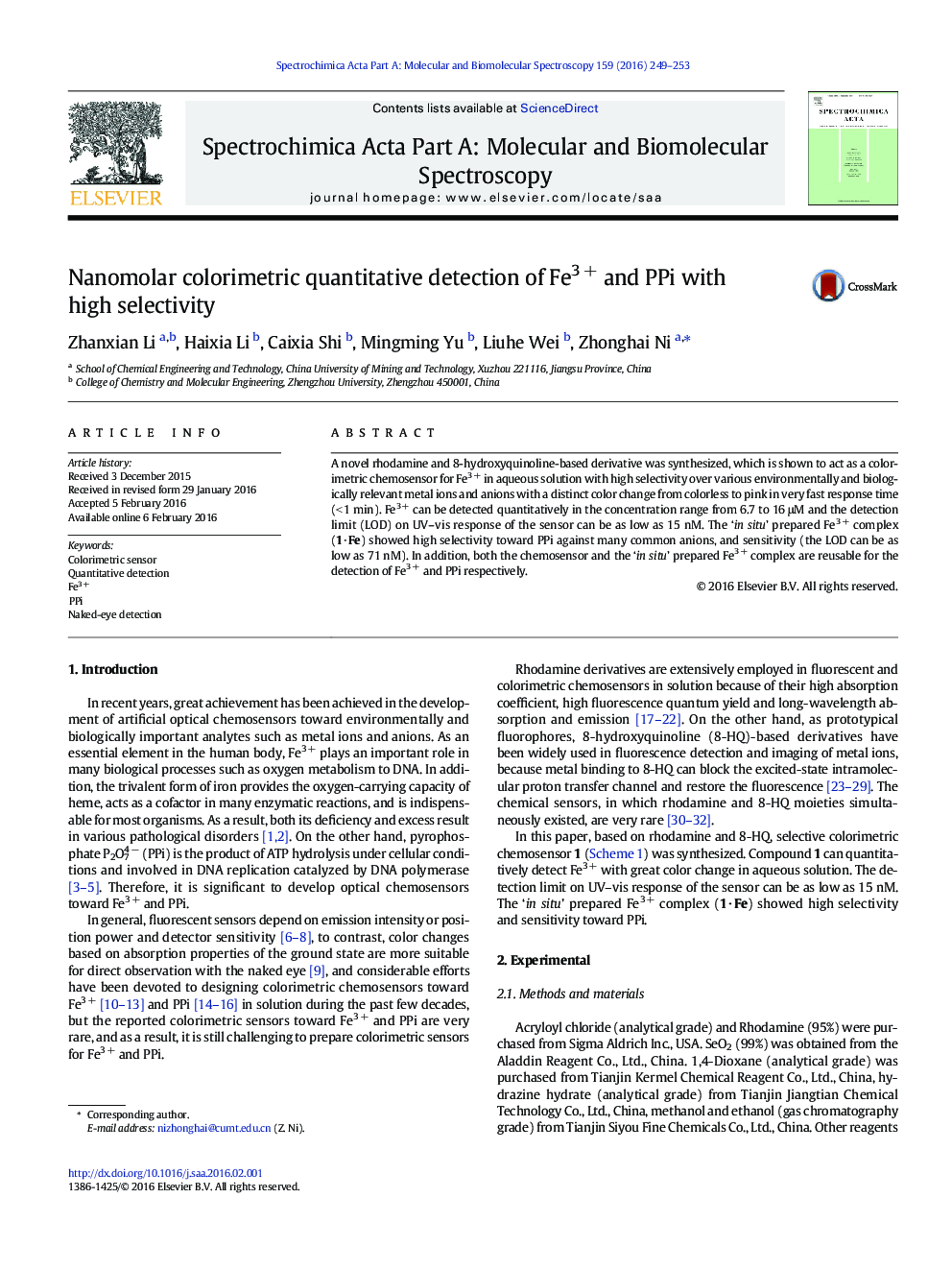| کد مقاله | کد نشریه | سال انتشار | مقاله انگلیسی | نسخه تمام متن |
|---|---|---|---|---|
| 1228944 | 1495210 | 2016 | 5 صفحه PDF | دانلود رایگان |

• A novel rhodamine and 8-hydroxyquinoline-based chemosensor for Fe3 + has been developed.
• The probe can quantitatively detect Fe3 + with a distinct color change from colorless to pink within 1 min.
• The ‘in situ’ prepared complex showed high selectivity and sensitivity (the LOD can be as low as 71 nM) toward PPi.
A novel rhodamine and 8-hydroxyquinoline-based derivative was synthesized, which is shown to act as a colorimetric chemosensor for Fe3 + in aqueous solution with high selectivity over various environmentally and biologically relevant metal ions and anions with a distinct color change from colorless to pink in very fast response time (< 1 min). Fe3 + can be detected quantitatively in the concentration range from 6.7 to 16 μM and the detection limit (LOD) on UV–vis response of the sensor can be as low as 15 nM. The ‘in situ’ prepared Fe3 + complex (1 ⋅ Fe) showed high selectivity toward PPi against many common anions, and sensitivity (the LOD can be as low as 71 nM). In addition, both the chemosensor and the ‘in situ’ prepared Fe3 + complex are reusable for the detection of Fe3 + and PPi respectively.
A novel rhodamine and 8-hydroxyquinoline-based chemosensor and the ‘in situ’ prepared Fe3 + complex are reusable for the detection of Fe3 + and PPi respectively.Figure optionsDownload as PowerPoint slide
Journal: Spectrochimica Acta Part A: Molecular and Biomolecular Spectroscopy - Volume 159, 15 April 2016, Pages 249–253